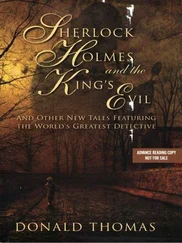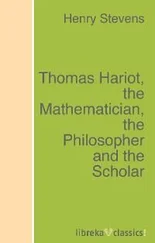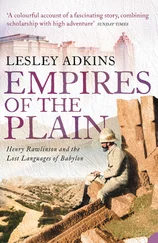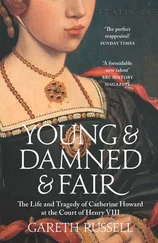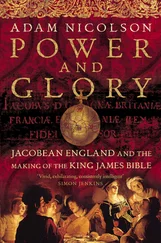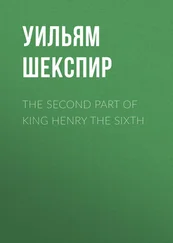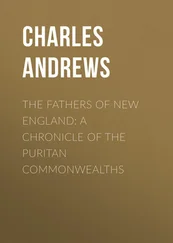As they sailed into the open waters of the Channel, Lovell’s pleasant demeanour changed. Seizing Tyrell, he threatened to throw him overboard unless he sent word to his son to surrender Guisnes to the king’s officers. There was nothing Tyrell could do. Together with two other suspects, Sir John Wyndham and a servant of Tyrell’s called Robert Wellesbourne, Tyrell and his son were brought back to London and thrown in the Tower, where they were visited by members of the king’s council, to whom treason cases were entrusted. Henry, very probably, took a hand in the questioning too. 24
It was normal for kings to interrogate suspects, and Henry was no exception. Payments for ‘bringing up of prisoners’ litter his chamber accounts, and after Warbeck’s failed invasion at Deal in 1495, he cross-examined many of his captured supporters under threat of death. Henry’s method of questioning is well documented, from his probing of Warbeck in the Tower, to his cross-examining of the many people that brought him information. As with his way of assembling intelligence, it was gentle, meticulous and logical: perfectly clear, so that people could understand what was being asked of them, leaving no room for evasion. If they then started twisting and turning, he then snapped, ‘ suaviter ac saeviter ’ as Soncino had said. It was the kind of interrogation technique that left people trembling in apprehension, wondering when the storm would break.
Whether or not Henry himself had people tortured is unrecorded, though if not, he would be unique among monarchs of the age. The characteristic secrecy with which he operated is a more ready explanation. His officials, in the usual way, resorted to torture – ‘straight handling’, or ‘some pain’ – at the drop of a hat, as soon as a suspect showed signs of resistance or ‘stomach’ or was overly ‘crafty in making his answers’. Methods of applying pain were many and ingenious, in particular the ways of twisting, stretching and manipulating the body out of shape, normally falling under the catch-all term of the rack, or the brakes. Often, these machines were customized and named according to the twisted imaginations of their practitioners: in the Tower in the 1450s, there was a brake called ‘the duke of Exeter’s daughter’. 25Whatever happened to Tyrell and his associates in the Tower that March, somebody talked.
Amid rumours of an imperial-backed invasion by Suffolk, and as the earl and his right-hand man Sir Robert Curzon were anathematized by bell, book and candle at St Paul’s Cross, the country remained on a state of high alert. In March, a detachment of Sir Reynold Bray’s men swooped on Portchester Castle, whose strategic position on the Hampshire coast made it a crucial link in England’s defences, and whose garrison had, apparently, been infiltrated by Suffolk sympathizers. The suspects were arrested, taken to nearby Winchester and, on 19 March, amid a city preparing for the Palm Sunday festivities, summarily beheaded. One of the ringleaders, the castle’s constable, Charles Rippon, had history. Years before, he had been caught up in the Stanley conspiracy and, as Henry’s net closed, he had been arrested, then pardoned. He had subsequently fought for Henry against the Cornish rebels at Blackheath in 1497 – but that, it seemed, was hardly a guarantee of loyalty: so too had Suffolk. As Henry trawled through his lists of suspects, Rippon, like so many, had again fallen under suspicion. 26Then, in April, came the catastrophic news of Arthur’s death. After that, things started to snowball.
On 18 April Venetian dispatches from England reported that the king was ‘in trouble’ and ‘had ordered the arrest of one of his chamber attendants’, a yeoman usher called Matthew Jones. 27Although Jones’s role in the conspiracy was obscure, his arrest indicated a horribly familiar phenomenon: disloyalty deep within the king’s household. Around the same time, another far more prominent attendant was seized by Henry’s guardsmen as he did his ‘daily diligence to the king’ and carried away to the Tower: Lord William Courtenay, son of the earl of Devon and Queen Elizabeth’s brother-in-law, and one of those who had ‘banqueted privily’ with Suffolk in the days before he fled. With him was Suffolk’s youngest brother, William de la Pole, who as a Plantagenet could not be allowed to remain at liberty any longer. News of the pre-emptive detentions, ‘for favour which they bore unto Sir Edmund de la Pole, as the fame then went’, swirled around London. 28The capital was tense. On 30 April, two unnamed men, one old and one young, imprisoned for ‘certain slanderous words spoken by them of the king and his council’, were taken to the Tun at Cornhill, the barrel-shaped stone conduit over which the third pageant of Catherine’s reception had been constructed the previous November, and locked in the pillory on top of it. After standing there for an hour being pelted with rubbish and stones, their ears were hacked off. They were then sent back to prison.
The following Monday, 2 May, London’s Guildhall was the scene of a high-profile show trial. After some two months in the Tower, Sir James Tyrell, his servant Robert Wellesbourne, Sir John Wyndham and a shipman were hauled before a judicial commission. The same day, they were convicted of treason and sentenced to be hanged, drawn and quartered. Four days later, their sentences commuted to a quicker, less agonizing death, Tyrell and Wyndham were beheaded away from public view in the seclusion of Tower Hill. From his walk-on part in Suffolk’s conspiracy, Tyrell’s role was to assume greater dimensions beyond the grave. Not long after his execution, it was being said that he had confessed to murdering Edward IV’s sons, the princes in the Tower. A decade on, Thomas More had transformed Tyrell into the archetype of the over-ambitious courtier, a man whose heart ‘sore longed upward’, who organized the princes’ deaths at Richard III’s behest. By the end of the sixteenth century, following More, Shakespeare immortalized Tyrell as the perpetrator of ‘the most arch deed of piteous massacre/ That ever yet this land was guilty of.’ 29
Tyrell’s servant, Robert Wellesbourne, ‘remained in prison abiding the king’s grace and pardon’. It soon became clear why. The following Saturday, in the White Hall of Westminster Palace, Tyrell’s son Thomas, Matthew Jones and Sir Robert Curzon’s pursuivant, or courier, were paraded in a carefully staged indictment: the key witness was their co-conspirator Wellesbourne. Jones and the courier were sentenced to death and shipped back across the Channel to Guisnes, where they were executed as an example to Tyrell’s recalcitrant garrison. 30
Wellesbourne’s testimony had been crucial. Jones had probably been arrested on his evidence, so too Rippon and his colleagues at Portchester, all events that had occurred after Wellesbourne’s arrival in England. Whether he had been a double-agent all along – Wellesbourne’s family had strong connections with Tyrell, but also with Sir Thomas Lovell – or had been turned by Henry’s agents is debatable, but it was probably the latter. The king had long had a reputation for being able to intimidate, flatter and turn conspirators into useful lines of royal intelligence – Warbeck had denounced, in rather prim tones, the ‘importunate labour’ of Henry and his agents to ‘certain of our servants about our person, some of them to murder our person, and other to forsake and leave our righteous quarrel.’ 31Wellesbourne, ‘alias Hodgekinson’, was only the latest in a long and dishonourable line. Towards the end of May, he received a royal pardon for services rendered, and was retained by the king on the comfortable half-year’s salary of 60s 10d. The following month, he seems to have been back in the Low Countries, where he managed to get access to the earl of Suffolk’s confidential correspondence, copying letters and sending them back to Henry. These would not be the last of his services. 32
Читать дальше


